It will happen at some point or another- you step into your garden, that almost tingling feeling of excitement and anticipation as you get closer and closer to see what you might be able to harvest and bring inside today- and then…that sinking feeling…something has taken over, wreaked havoc! Now what?
While you can’t completely eliminate pests, what you can do is learn what’s common, how to identify it, and some steps to take to reduce pests at large. Again, it will not completely eliminate pests, but you can learn how to control them and reclaim your growing space. And perhaps some of your sanity too.
First things first…
It might surprise you to learn that the overwhelming majority of insects you’ll find in your garden are actually, most of the time, beneficial. Before you take that little beetle into your fingers and crush it, take a few minutes and simply observe them: Are they munching on leaves, or other insects? (Seems morbid, yes!) Are they flying or crawling, or do they hop? Do they have any colorations or patterns that stand out? Do your plants appear to be playing host to multiple life cycles (larva, adult, egg, etc?) By keeping mind to a few behaviors and physical characteristics, you can quickly determine whether your critter problem is something to be dealt with immediately.
The Pests
Please keep in mind that this is not an exhaustive list; rather, these are those that are most common. If you are unsure of a pest that you come across, contact your local extension agent or do some of your own research before you kill it or leave it.
A brief disclaimer: If you are affiliated with Grow Appalachia, be it as a participant, volunteer, or coordinator, please remember that we advocate for the use of organic products only. Only organic products are to be purchased with Grow Appalachia funds. Contact us if you have any questions!
All right, let’s get down to business! (All information adapted from Good Bug, Bad Bug).
***
Aphids: Aphids are tiny and pear-shaped, with soft bodies that can be green, yellow, red, or black. Their posterior end has two small tube-like structures, called cornicles. Look for piercing sucking mouthparts, which do their damage by getting into plant tissue and removing sap; this damage is most commonly found on the undersides of leaves, so look for them there. New plant growth is also susceptible. Check for discoloration or curling in leaves and buds. Aphids’ host plants include roses, tomatoes, peppers, and carrots.
Colorado Potato Beetle: Adults reach 1/3 of an inch in size, with a rounded hard shell and wings with black and tan stripes. The beetle’s red head has several black irregularly shaped spots. Potato beetle larva are 1/2″ long, red and fat, with black heads. Adults burrow in the winter, sometimes under several inches into the soil, and re-emerge in the spring, where they feed and breed, capable of producing up to three generations a year. Potato beetles target all Solanaceous crops, which includes tomatoes, peppers, eggplant, and potatoes. They feed on the leaves and can defoliate an entire plant very quickly.
Cucumber Beetle: They look similar to the Potato Beetle mentioned above; Cucumber Beetles have yellow and black stripes and are 1/4″ long. Also like the potato beetle is their burrowing in winter, where they re-emerge again in spring. There are also spotted species of the Cucumber beetle, with 11 spots in the Eastern portion of the US and 12 in the Western. Look for cucumber beetles on germinating seedlings, or underneath leaves, of your cucurbits (squash, cucumbers, melons, and also beans and corn). They transmit bacterial wilt, an absolute catastrophe in the garden, so these critters definitely need to be readily controlled!
- Striped cucumber beetle
- Spotted cucumber beetle
Flea Beetle: These little guys are quick, hopping like their namesake, the flea. They’re less than half an inch long, with large hind legs for jumping, and they’re shiny black. Their signs of damage include small ragged holes in leaves, preferably in younger vegetation. They’re also most prevalent from the early to mid growing season. Look for them in your brassicas (broccoli, cabbage, cauliflower), corn, eggplant, radishes, tomatoes, and turnips.
Mexican Bean Beetle: Not to be confused with our good friend the ladybug or Asian beetle, Mexican bean beetles are copper colored, with black spots and no white, the distinguishing feature between them and ladybugs/Asian beetles. The larva are light yellow and covered in spines. Adults go dormant for the winter, reappearing in spring and laying their eggs on the undersides of leaves of host plants. Eggs are tiny orange sacs. Their damage is referred to as skeletonization, which simply means that all of the leaf matter is consumed within the veins, leaving only the veins intact. While their primary host plant of choice is, of course, beans (cow peas, snap beans, pole beans, soybeans, etc), they will also sometimes consume cabbage, kale and mustards.
- Mexican bean beetle adult
- Mexican bean beetle larva
Slugs: Slimy and smooth, either in brown, black or gray, slugs can range from an inch to several in length. Their sliminess leaves a textbook trail in their wake. Slugs’ damage is often done at night, in which they’ll consume entire seedlings and other tender growth overnight. Also, look for irregularly shaped holes in leaves, typically at the center. Slugs are drawn to germinating seedlings, as well as tender vegetables like lettuce and ripening strawberries and tomatoes.
Squash Bug: Approximately 5/8″ long, squash bugs are dark gray or brown in color, with flat backs and an exterior edge of their abdomens that is rust-colored. Eggs are bronze ovals in a cluster typically found on the underside of leaves or on stems. Look for small specks on leaves that soon turn yellow, as squash bugs pierce the plant and suck out the juices. Affected vines will wilt and blacken. Host plants include all curcurbits: squash, cucumbers, melons, and pumpkins.
Squash Vine Borer: Unfortunately, in many instances, the damage of vine borers is not noticed until it’s too late. Vine borers emerge as adults in the spring, from pupae in the winter, when their host plants begin flowering. The larvae (up to 1″ long, white, chubby, with brown heads) of vine borers are the ones that do the damage; the eggs are laid on the stems and once the larva hatch, they burrow into the stem to feed on the inside tissue, feeding for about a month. Healthy plants will suddenly seem to wilt, almost overnight. Their host plants include all curcurbits: squash, pumpkins, and occasionally cucumbers and melons.
- Vine borer larva, with damaged plant
- Vine Borer adult
Tomato hornworm: These little guys are impossible to miss, with their green color, a black/red “horn” on the posterior end, and diagonal white stripes down their backs. They range in size from 3-5 inches in length and can be as thick as a thumb. These caterpillars are the larval form of a sphinx moth, but only the caterpillars are considered pests. Look for them on the undersides of leaves, or along stems where you notice damage present (entire leaves gone with the exception of the mid-rib, usually towards the highest point of the plant first). Host plants are all members of the tomato family: tomatoes, tomatillos, peppers, and eggplant.
***
Basic Pest Management:
Again, the idea of completely eliminating pests is not realistic, but rather, control is best. Below are a few suggestions for keeping populations under control:
-Clear your garden and garden beds of debris and dead plant matter periodically, and always at the end of each growing season. Many pests thrive in those environments.
-Practice crop rotation! Never plant the same members of vegetable families in the same location year after year.
-If able, hand-pick the pests from your vegetables and either place them in a dish of soapy water or squish them, if small enough.
-Select vegetable varieties that are pest and disease-resistant. Also, if you use transplants, make sure they’re healthy and from a reputable source. Healthy plants are able to withstand damage and attacks much better than unhealthy ones.
-Keep up with your weeding. If weeds become overgrown, they can become opportunistic habitats for unwanted insects.
-Protect your early-growing plants with row cover to deter insects and other critters.
-Introduce beneficial insect species into your garden, or plant crops that attract them. You can learn more about beneficial insects here.
-Only use pesticides as a last resort. Even organic pesticides can contain harmful chemicals and additives.
Sources/Further Reading:
Good Bug Bad Bug, by Jessica Walliser
Organic Pest Control from Mother Earth News: Information about safely exterminating pests, by pest
Your county extension agents are excellent resources in all things pest identification!

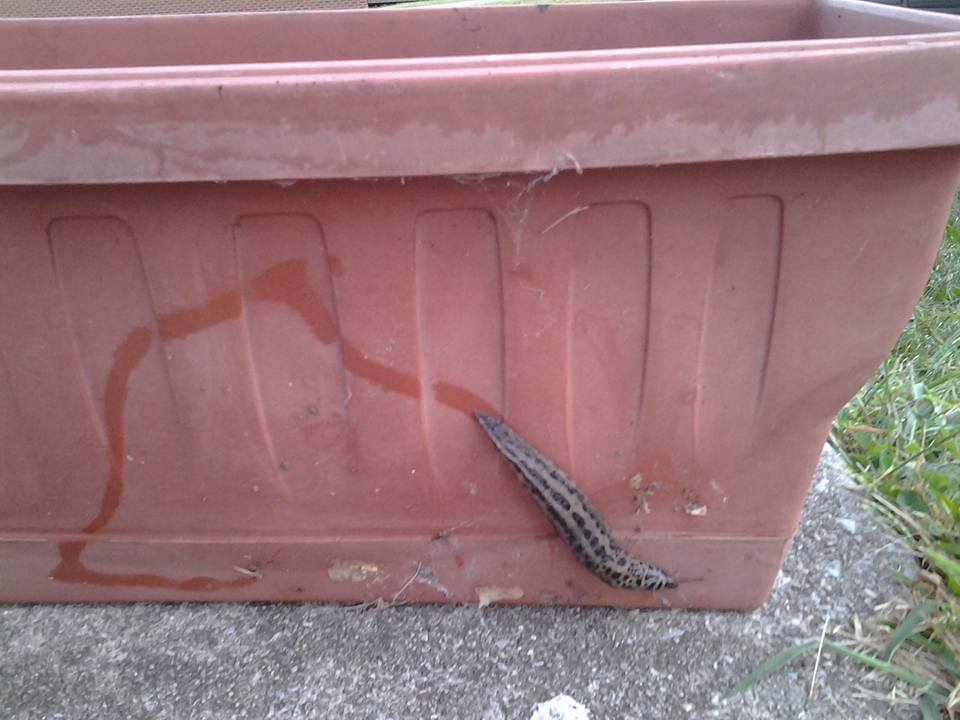

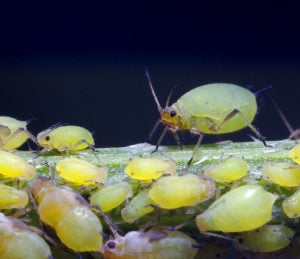
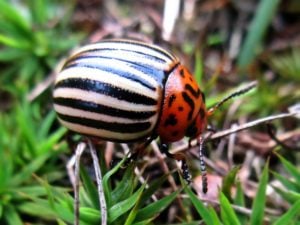
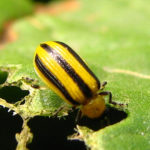
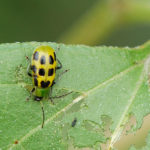
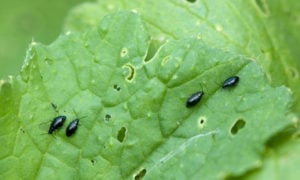
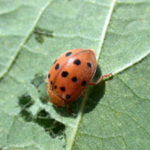
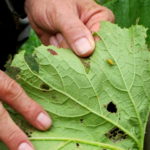


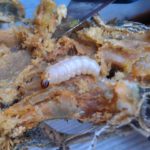
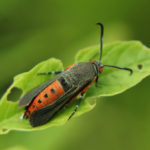
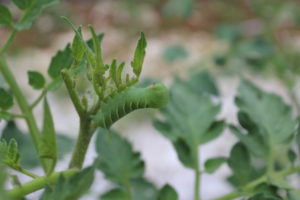

Please are there insecticides for bugs that are safe around pets?
Kindly suggest a broadspectrum fumigant for aphids and beetles. Thanks.